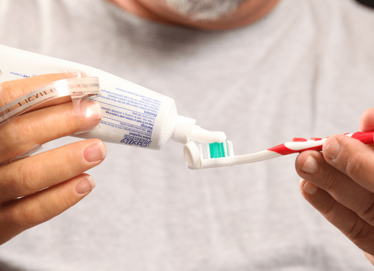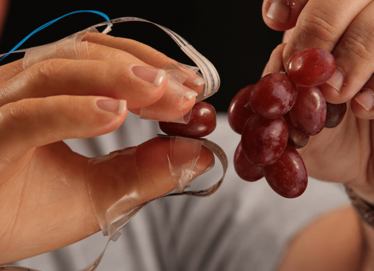How did you get into this area?
Throughout my career I’ve been building devices that connect to the brain’s “peripherals”. At first, I focused on motor restoration after spinal cord injury – replacing severed neural connections with a device that stimulates the muscles to contract in response to signals from the brain. Over time, I became interested in communication in the opposite direction – passing information from the body to the brain. A lot of progress has been made with cochlear and even visual prosthetics, but there has been very little success in the area of touch.
Sounds like a tough challenge – why take it on?
Tactile sensation is what connects us to the world. When I speak with arm or hand amputees, they say that losing that connection is almost worse than the loss of function. People tend to discuss their prosthetic as a tool attached to their body, and not a part of who they are. I wanted to restore that sense of touch, and help them reconnect to the world. So my lab began applying the same technology we had used in motor restoration to a different problem. We asked: how can we communicate with the brain, and what does it mean when we do?
How confident were you that it was even possible?
We were pretty confident that we’d get sensation, but we weren’t sure how specific or useful it would be. Some of my colleagues told me it would feel like a grinder on the hand, or that any sensations would not be localized enough to be useful. There were a lot of unknowns, and really only one way to find out. We knew from nearly a decade of experience that the electrode technology was safe, so we embarked on a feasibility study with two people who had lost a lower arm and hand.
What did participants want to get out of the study?
Naively, we thought that the greatest gains would come from better function. Without sensory feedback, the person has to watch the prosthesis the whole time to know that they haven’t dropped or crushed something – restoring touch would make manipulating objects much easier. People do appreciate that, but what they want most of all is that sense of connection – to hold something in their hand and be able to feel it. Mostly, they just wanted to hold hands with their spouse.
In simple terms, how does it work?
When you lose your hand, the sensors that detect touch are gone but the nerves that connected those sensors to the brain still exists. Our device wraps an electrode around a nerve, and allows us to electrically activate it. In effect, we replace the sensor that was on the hand with one on the prosthesis. When the brain receives a signal along the nerve, it doesn't know that it is artificial – users report experiencing the sensation as if the prosthesis was their hand.
Is the sensation that users get from the prosthetic “normal”?
Not exactly. We can stimulate and they’ll feel the hand – but it may not feel quite like they are used to. We can make an analogy with language. When I speak, you can understand because we use a specific pattern of sounds. If I just made random noises, you’d recognize it as sound but it wouldn’t be language. It’s similar with the sensory input – they are feeling something, but it doesn’t necessarily translate into familiar sensations.
One of the biggest breakthroughs in this work is that the way we apply stimulation changes the quality of the sensation the person experiences. It might start off as a tingling or a buzz, but by changing the pattern of stimulation, it can transform into a more natural sensation of pressure, or of something moving across their skin. As we learn more, we don’t just apply current, but use it to convey information, so that the person’s brain begins to interpret it as natural sensation. We’re still doing baby talk right now – we can communicate in a basic way, but we have a lot of language to learn.
What are the next steps for the lab?
The work is still experimental and there is a lot of work to do to validate our early results. Recently, we have been able to allow a participant to go home with the device for a two-week period, which has been fascinating. From the data we record, we can see that he uses the prosthetic differently when the sensation is turned on. Without sensation, he tends to use it for bracing or holding things, but with sensation he becomes a more active user, grasping and manipulating things more often. We’ve learned a lot from that experience, and we’re now looking to make the device suitable for longer-term use. We’re adding electrodes that can communicate with the brain, so that the person can simply think about moving their fingers and it happens. Our goal is to get it feeling as much like a real hand as we can.
Watch the video
Professor in the Functional Neural Interface lab at Case Western Reserve University.

















